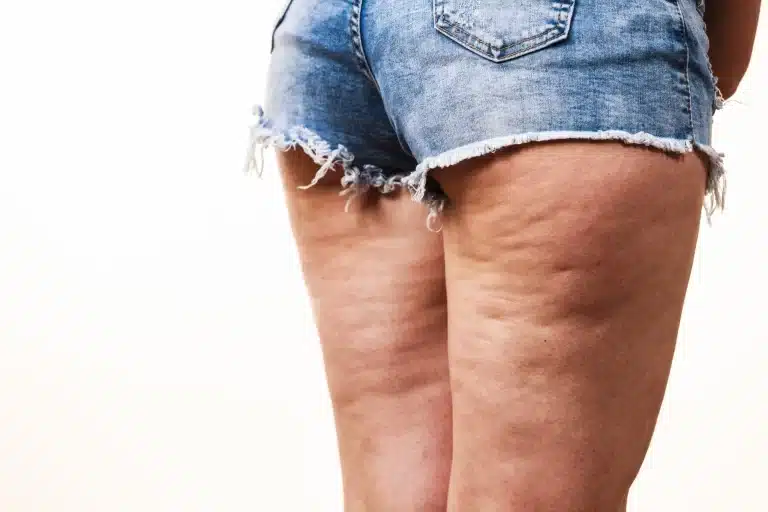Key Takeaways
- Facial fat transfer can offer lasting results, with many patients enjoying benefits for five years or more, highlighting its effectiveness as a long-term cosmetic solution.
- The longevity of fat transfer results is significantly influenced by factors such as the patient’s health, lifestyle, and how their body naturally processes fat.
- Maintaining the outcomes of a facial fat transfer requires a combination of healthy living, avoiding extreme weight fluctuations, and following post-procedure care instructions closely.
- Tips for prolonging the effects of a fat transfer include staying hydrated, maintaining a stable weight, and protecting the skin from excessive sun exposure.
- When comparing facial fat transfer to other cosmetic procedures, it stands out for its natural-looking results and dual benefits of reducing fat in one area while enhancing another.
- Understanding these key aspects can help individuals make informed decisions about pursuing facial fat transfer and managing their expectations regarding the procedure’s longevity and care requirements.
Understanding Fat Transfer Longevity
Fat Grafting Permanence
Facial fat transfer, a favored alternative to synthetic fillers, boasts potential indefinite longevity. Unlike temporary solutions, fat grafting involves transferring the patient’s own fat to facial areas needing volume. This process not only fills in wrinkles or adds volume but also integrates with the body’s natural tissues.
Once transplanted, the survival rate of the fat cells is crucial. Initial absorption occurs, but surviving cells tend to be permanent. The key phase is when these cells become vascularized, meaning they establish a blood supply. This critical step ensures their longevity, setting facial fat transfers apart from other cosmetic procedures.
Skincare Post-Transfer
Maintaining the appearance of a facial fat transfer extends beyond the procedure itself. A healthy skincare routine plays a pivotal role in preserving the results over time. Regular hydration, sun protection, and nourishing treatments support skin elasticity and health.
Moreover, avoiding smoking and following a balanced diet contribute to longer-lasting outcomes. These practices ensure that the transferred fat remains healthy and integrated within its new location. They highlight how lifestyle choices impact cosmetic enhancements’ effectiveness.
Factors Influencing Fat Transfer Duration
Age Factor
Age significantly impacts the outcomes of facial fat transfer. Younger individuals often see longer-lasting results due to higher skin elasticity and better overall tissue quality. As we age, our skin loses elasticity, which can lead to a quicker diminishment of transferred fat.
Lifestyle Choices
Lifestyle plays a crucial role in the longevity of fat transfer results. Smoking, for instance, impairs blood flow, affecting the survival rate of transferred fat cells. Similarly, excessive alcohol consumption can dehydrate the body and skin, hastening the decline of results. Prolonged sun exposure also degrades skin quality over time, impacting the fat retention rate negatively.
Genetic Influence
Genetics dictate how our bodies process and retain fat. Some individuals may naturally have a higher rate of fat reabsorption, which can reduce the duration of fat transfer effects. Understanding one’s genetic predisposition towards fat retention can provide realistic expectations for the procedure’s outcome.
Weight Fluctuations
Significant weight changes post-procedure can alter the appearance of facial fat transfer results. Gaining weight may enhance the filled areas disproportionately, while losing weight could diminish the achieved volume more rapidly than expected.
Maintaining Fat Transfer Results
Skincare Regimen
A consistent skincare regimen is crucial for maintaining the results of a facial fat transfer. High-quality products can nourish the skin and support the underlying fat cells. They help in keeping the skin supple, which is essential for showcasing the restored volume.
Regular exfoliation and moisturization are key. They ensure that the transferred fat remains prominent and effective in achieving a youthful look.
Touch-Up Procedures
Over time, some of the transferred fat may naturally be absorbed by the body. Regular touch-up procedures can address this issue. They refresh and prolong the youthful appearance initially achieved.
Touch-ups every few years can make a significant difference. They help maintain the desired volume and contour of the face without undergoing extensive surgery again.
Weight Stability
Maintaining a stable weight is vital after a facial fat transfer. Significant weight fluctuations can alter the distribution of transferred fat, impacting its appearance.
A balanced diet and regular exercise contribute to weight stability. They prevent sudden changes in body composition that could compromise the longevity of fat transfer results.
Tips for Prolonged Outcomes
Daily Sunscreen
Protecting your skin from the sun is crucial. Daily sunscreen use can prevent premature aging. This extends the longevity of facial fat transfer outcomes. UV rays can damage skin and diminish fat transfer results over time.
Healthy Lifestyle
A healthy lifestyle supports lasting outcomes. Avoid smoking and excessive alcohol consumption. Both can negatively affect the survival of transferred fat cells. They also accelerate aging, impacting the longevity of fat transfer results.
Skincare Products
Choosing the right skincare products is essential. Look for products that enhance skin’s regeneration. These can improve the effects of fat transfer on skin aging. Opt for items rich in antioxidants and hydrating ingredients.

Comparing Fat Transfer and Other Procedures
Fat Longevity
Fat transfer, especially to the face, stands out for its potential indefinite longevity. Unlike synthetic dermal fillers that require regular refreshment every 6 to 18 months, facial fat grafting can last much longer. This is because the transferred fat integrates with the existing facial tissues, potentially becoming a permanent part of the facial structure.
The process involves harvesting fat from one’s own body, purifying it, and then injecting it into the face. This not only adds volume but also improves skin quality over time.
Regenerative Benefits
Facial fat transfer offers natural regenerative benefits. The procedure doesn’t just fill in wrinkles or add volume; it can actually improve the health of your skin. Fat contains stem cells and growth factors that help rejuvenate the skin from within, promoting a more youthful appearance that creams or serums cannot match.
In contrast, other anti-aging treatments like plasma skin resurfacing work by inducing controlled damage to the skin to stimulate regeneration. While effective, they lack the natural, holistic improvement that comes from using one’s own fat cells.
Versatility Across Areas
Fat grafting boasts remarkable versatility across various facial areas. It can address signs of aging in the cheeks, under eyes, lips, and even jawline with a single procedure. This contrasts sharply with certain procedures designed for specific issues—like lip fillers for fuller lips or eyelid surgery for droopy eyes—offering a more comprehensive solution to facial aging.
Other cosmetic procedures might target individual concerns but fail to provide the harmonious results achievable through fat transfer. A plastic surgeon can strategically use fat to enhance overall facial harmony and balance.
Closing Thoughts
Facial fat transfer offers a lasting solution to restore volume and youthfulness, with results that can beautifully withstand the test of time. Understanding the factors that influence its longevity, and following tips for maintaining results, ensures you get the most out of this investment in your appearance. Comparing fat transfer to other procedures highlights its unique benefits, including natural-looking outcomes and improved skin texture. Remember, your commitment to post-procedure care plays a pivotal role in extending the life of your fat transfer results.
Ready to embrace a more youthful look that lasts? Consider facial fat transfer as a cornerstone of your anti-aging strategy. Consult with a skilled professional who can guide you through the process and help tailor a treatment plan that aligns with your aesthetic goals. Your journey towards lasting beauty starts now.
Frequently Asked Questions
How long does facial fat transfer last?
Facial fat transfer can last for several years, often 5 years or more, depending on factors such as technique used, individual healing processes, and lifestyle.
What factors affect the longevity of a fat transfer?
The longevity of a fat transfer is influenced by the patient’s age, lifestyle, the skill of the surgeon, and how well the body accepts the transferred fat.
Can I do anything to maintain my fat transfer results longer?
Yes, maintaining a stable weight, following a healthy lifestyle, and protecting your skin from sun damage can help prolong the results of a facial fat transfer.
Are there any tips for ensuring prolonged outcomes from a facial fat transfer?
For prolonged outcomes, follow post-procedure care instructions diligently, avoid smoking, stay hydrated, and maintain a consistent skincare routine.
How does facial fat transfer compare to other facial rejuvenation procedures?
Facial fat transfer offers natural-looking results and can have longer-lasting effects compared to synthetic fillers. It also rejuvenates the skin by improving its texture and tone.
Is it common for some of the transferred fat to be absorbed by the body?
Yes, it is normal for some of the transferred fat to be absorbed by the body within the first few months after the procedure. The remaining fat usually stays for years.





